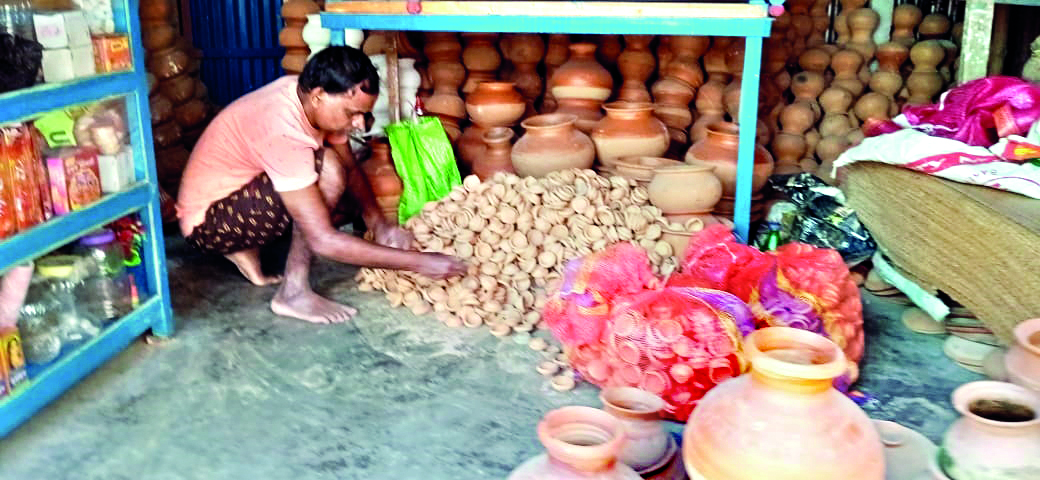Balurghat: Festival of lights fails to bring cheer to clay lamp artisans

Diwali, the festival of lights is just around the corner, yet it has failed to bring smiles on the faces of the clay lamp artisans who light up Diwali.
From the increase of cost of raw materials, leading to increase in cost of production to new generations staying away from this occupation, has pushed these artisans to dire straits.
With the festival of lamps just a few days away, work is going on round the clock with most members of the artisan families involved in Balurghat’s Paulpara. Earlier, the demand for clay lamps was very high in all Pujas. Still, 108 clay lamps are offered to Goddess Kali on the night of Diwali along with clay lamps being lit during the festival stretch.
Despite all the hard work, the artisans hardly make any profits. Owing to this, the new generation is also moving away from this profession. Some artisans have started using motorised wheels in their homes while most of them are still using the manual potter wheel.
Sahadeb Paul, a clay artisan, said: “At least four labourers are required daily to prepare the soil for this job. It takes 15 days to make the kiln where the clay pots are fired. If four workers work for 15 days, we have to pay at least Rs 18000. In addition to wages, there is also the cost of raw materials. The price of one tractor of clay is Rs 700 now. It takes about Rs 2000 for wood to fire the kiln. We hardly get to see any profits.” The lamps sell at around Rs. 80 for 100.
Most of the potters of Paulpara migrated from Bangladesh between the 1970s and 1990s. Displaced people lost their land and came to the other side and chose the profession of their ancestors as their livelihood.
Mahadeb Paul, another artisan, said: “There is demand for earthenware in the market throughout the year. We are closed during the month of Baisakh (Bengali month) due to renovations. There are various tasks in the remaining 11 months. The pressure is a bit more during the Puja season. Despite the introduction of electric lights, the demand for earthen lamps does not decrease. This industry is slowly disappearing due to the high cost of production and the reluctance of the new generation to come to this profession.”
He said that the new generation should be encouraged and they should be trained to make other things using modern technology otherwise there is no future for this industry. “We desperately need government support and help to survive. Nowadays the government supports many artisans of different professions for their survival. We need similar support from the state,” he added



